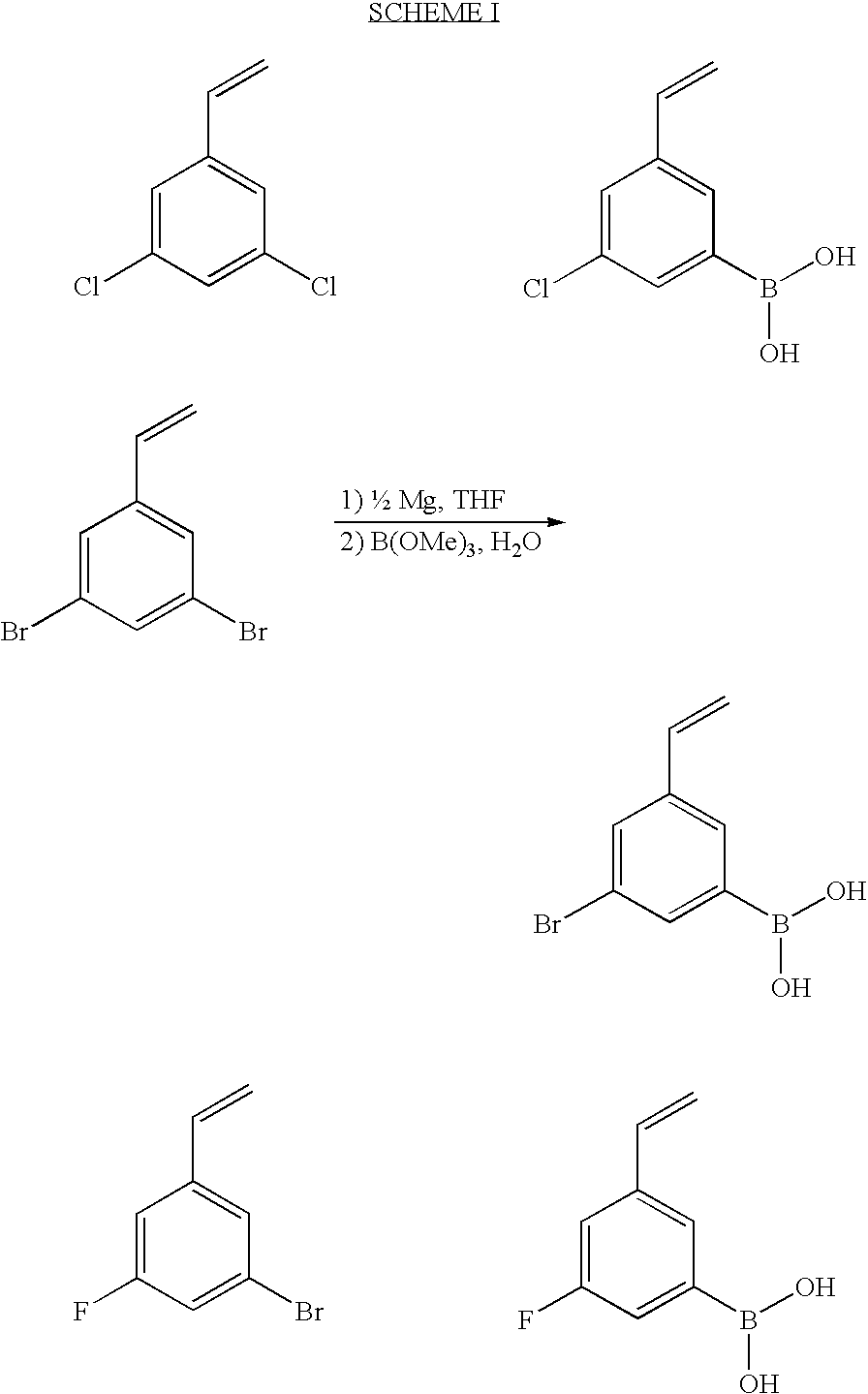Method of Applying Renewable Polymeric Lens Coating
a renewable polymer and lens technology, applied in the field of biomedical devices surface treatment, can solve the problems of eye discomfort or even inflammation, the regimen for the use of extended-wear lenses does not provide a daily period of rest or recovery for the eye, and the surface chemistry of the lens can affect the lens's susceptibility to deposition, etc., and achieves a comfortable wear and tear. , high wettability and/or lubrication
- Summary
- Abstract
- Description
- Claims
- Application Information
AI Technical Summary
Benefits of technology
Problems solved by technology
Method used
Image
Examples
example 1
Preparation of a Contact Lens
[0114]Mixtures were made by mixing the following components listed in Table 1, at amounts per weight.
TABLE 1WeightIngredientPercentPolyurethane-siloxane53prepolymerTRIS15NVP33HEMA5HEMAVC1Boronic acid monomer1N-hexanol15Vazo-640.5IMVT150 ppm
The resulting mixture is cast into contact lenses by introducing the mixture to a mold assembly composed of an ethyl vinyl alcohol mold for the anterior surface and an ethyl vinyl alcohol mold for the posterior surface and thermally curing the mixture at 100° C. for 2 hours. The resulting contact lens is released from the mold, extracted with isopropyl alcohol for 4 hours and placed in buffer solution. The boronic acid monomer used in this example is of the formula:
wherein X is —NO2.
[0115]Examples 2-8 illustrate the syntheses of hydrophilic reactive polymers that can be used to link to the boronic acid moieties of the lens surface.
example 2
Copolymer of DMA / GMA (86 / 14 mol / mol)
[0116]To a 1 L reaction flask were added distilled N,N-dimethylacrylamide (DMA, 48 g, 0.48 moles), distilled glycidyl methacrylate (GMA, 12 g, 0.08 moles) Vazo 64 initiator (AIBN, 0.1 g, 0.0006 moles) and anhydrous tetrahydrofuran (500 ml). The reaction vessel was fitted with a mechanical stirrer, condenser, thermal controller and a nitrogen inlet. Nitrogen was bubbled through the solution for 15 minutes to remove any dissolved oxygen. The reaction flask was then heated to 40° C. under a passive blanket of nitrogen for 168 hours. The reaction mixture was then added slowly to ethyl ether (1.5 L) with good mechanical stirring. The reactive polymer precipitated and organic solvents were decanted. The solid was collected by filtration and placed in a vacuum oven to remove the ether leaving 58.2 g of reactive polymer (97% yield). The reactive polymer was placed in a desiccator for storage until use.
example 3
Copolymer of DMA / GMA (76 / 24 mol / mol)
[0117]To a 1 L reaction flask were added distilled N,N-dimethylacrylamide (DMA, 42 g, 0.42 moles), distilled glycidyl methacrylate (GMA, 18 g, 0.13 moles) Vazo 64 initiator (AIBN, 0.096 g, 0.0006 moles) and toluene (600 ml). The reaction vessel was fitted with a magnetic stirrer, condenser, thermal controller and a nitrogen inlet. Nitrogen was bubbled through the solution for 15 minutes to remove any dissolved oxygen. The reaction flask was then heated to 60° C. under a passive blanket of nitrogen for 20 hours. The reaction mixture was then added slowly to 6 L of ethyl ether with good mechanical stirring. The reactive polymer precipitated and was collected by vacuum filtration. The solid was placed in a vacuum oven at 30° C. overnight to remove the ether leaving 46.7 g of reactive polymer (78% yield). The reactive polymer was placed in a desiccator for storage until use.
PUM
| Property | Measurement | Unit |
|---|---|---|
| Percent by mass | aaaaa | aaaaa |
| Percent by mass | aaaaa | aaaaa |
| Weight | aaaaa | aaaaa |
Abstract
Description
Claims
Application Information
 Login to View More
Login to View More - Generate Ideas
- Intellectual Property
- Life Sciences
- Materials
- Tech Scout
- Unparalleled Data Quality
- Higher Quality Content
- 60% Fewer Hallucinations
Browse by: Latest US Patents, China's latest patents, Technical Efficacy Thesaurus, Application Domain, Technology Topic, Popular Technical Reports.
© 2025 PatSnap. All rights reserved.Legal|Privacy policy|Modern Slavery Act Transparency Statement|Sitemap|About US| Contact US: help@patsnap.com



